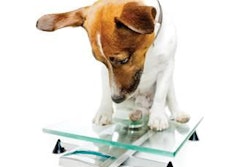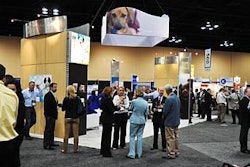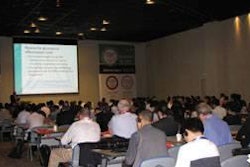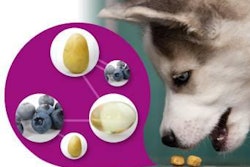With pending regulations from the Food Safety Modernization Act likely to affect the production of petfood, safety has become the top priority for every producer in our industry. Recent publications have linked petfood to transmission of pathogenic Salmonella spp. to humans and prompted a new description for petfoods as a "direct human contact feed" (Li et al., 2012).
While various strategies to control Salmonella have led to more vendor inspections, hazard analysis and critical control point (HACCP) plans and hold-and-release programs, every manufacturer is looking for a safety net. One that may hold promise is an ingredient currently used for numerous purposes in petfoods today: sodium bisulfate.
Sodium bisulfate is currently used in petfood for feline urine acidification, pH reduction and microbial control of soft treats and liquid digest (Aldrich, 2012). New research conducted at independent laboratories indicates that sodium bisulfate controls Salmonella contamination on the surface of extruded dry petfood.
The manufacture of dry petfood contains heat lethality steps (the pre-conditioner and extruder). Because of these "kill steps," the incidence of Salmonella is relatively low. However, instances of contamination continue to occur. Thus, reports of Salmonella-positive foods in the market are likely the result of recontamination after the extruder.
This recontamination could potentially occur from growth of Salmonella inside the conveying system or possibly from airborne dust in air-handling systems. If either is the case, then it is also likely the Salmonella detected are only on the surface of the kibble, and a surface-active compound might prove effective.
Sodium bisulfate has unique characteristics compared to other acids that make it effective against Salmonella contamination on the kibble surface. These include acid strength and a dessicating physically dry state.
Regarding acidic strength, it is well documented that sodium bisulfate is a stronger acidifier than most other acids. As we learn in our early chemistry textbooks, pKa: the dissociation constant of an acid dictates its strength. The lower the pKa, the stronger the acid. Sodium bisulfate has one of the lowest pKa's, at 1.99, of the common acids used in food production (Table 1).
The dissociation of the molecule into cation and anion in the presence of the Salmonella organism will affect the bacteria's cellular defense. Microbiologists call it the proton motive force. The disruption of ionic exchange at the surface of the bacteria creates an energy drain on the organism that it can't support, eventually leading to its death.
Acids that are in a physically dry state have an advantage for Salmonella control when applied to the outside of the kibble. Simply put, a dry acid can be made into a powder that can be dusted onto the surface of the kibble and is in a state where it will not react with the kibble surface. On the other hand, liquid acids will react with the surface components, causing them to be neutralized by proteins and other buffering agents they come into contact with, thus rendering them less effective for Salmonella control.
To test this theory, sodium bisulfate powder was applied to the outside of kibble at 0.25% addition rate by weight, then inoculated with four strains of Salmonella—S. enterica, S. anatum, S. choleraesuis and S. senftenberg—at 7,200 colony forming units per gram (cfu/g). Salmonella were quantified by standard methods at 30 minutes following inoculation (day 0) and sequential 24-hour intervals thereafter: days 1, 2, 3 and 4 (Table 2). Additionally, total aerobes were quantified by aerobic plate counts at the same time intervals to provide insight on the effects on the broader bacterial category (Table 3).
These results indicate that 0.25% of sodium bisulfate powder on the outside of the kibble is sufficient to reduce and even eliminate Salmonella contamination on the kibble surface. Further, the results showed a significant "knock-down" within 24 hours with a sustained kill.
The mode of action of sodium bisulfate is independent of the type of dry food it is applied to. In its dry form, sodium bisulfate will not react with kibble, allowing it to remain active until consumption.
Sodium bisulfate is an acid salt that, upon contact with water, dissociates into sodium ions, hydrogen ions (which lower the pH) and sulfate ions (Figure 1). It also exerts an osmotic effect, drawing water from the Salmonella, making a low pH environment in contact with the cell.
Thus, the critical detail for success is sufficient coverage with sodium bisulfate powder on the entire surface of the food.
In addition to the topical action of the sodium bisulfate, the site for addition may provide additional benefit for sanitizing conveying and storage equipment.
More about sodium bisulfate
To learn more about the uses of sodium bisulfate in petfood, read Dr. Greg Aldrich's May 2012 "Ingredient Issues" column at www.petfoodindustry.com/45984.html.
















